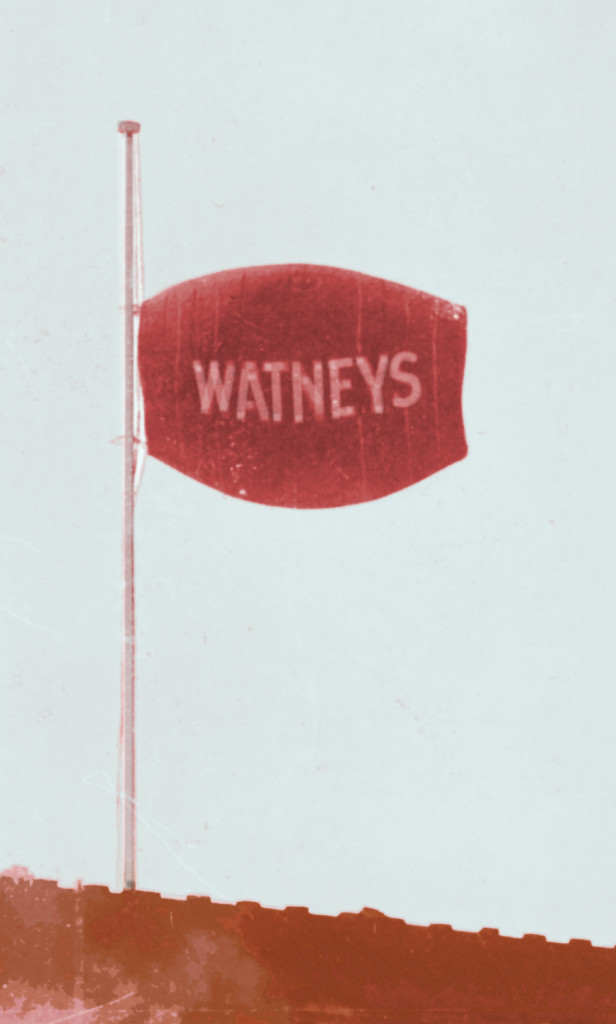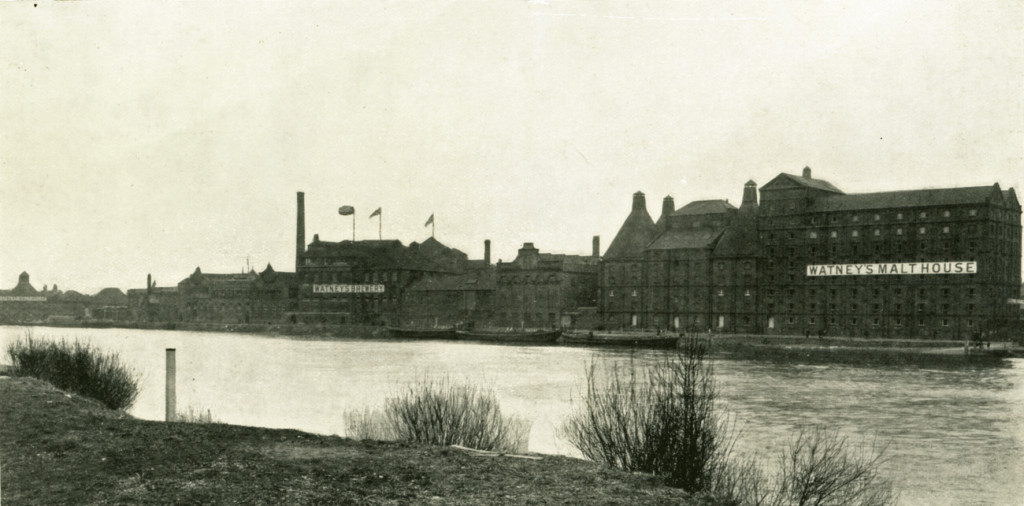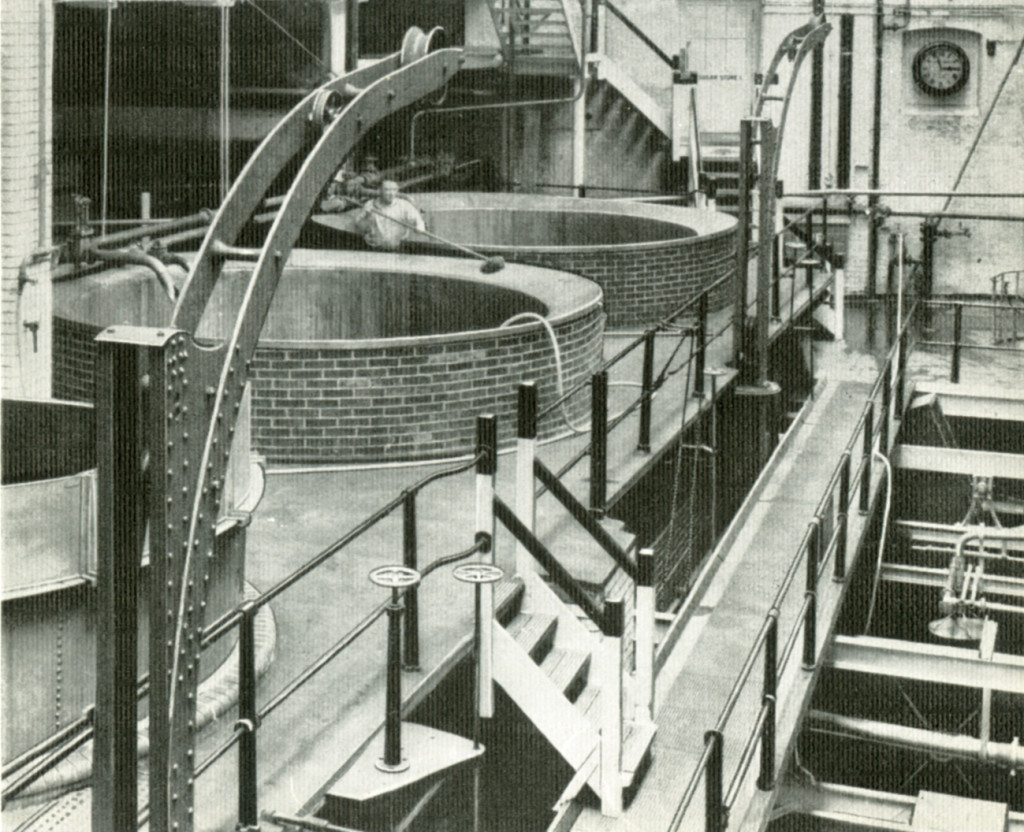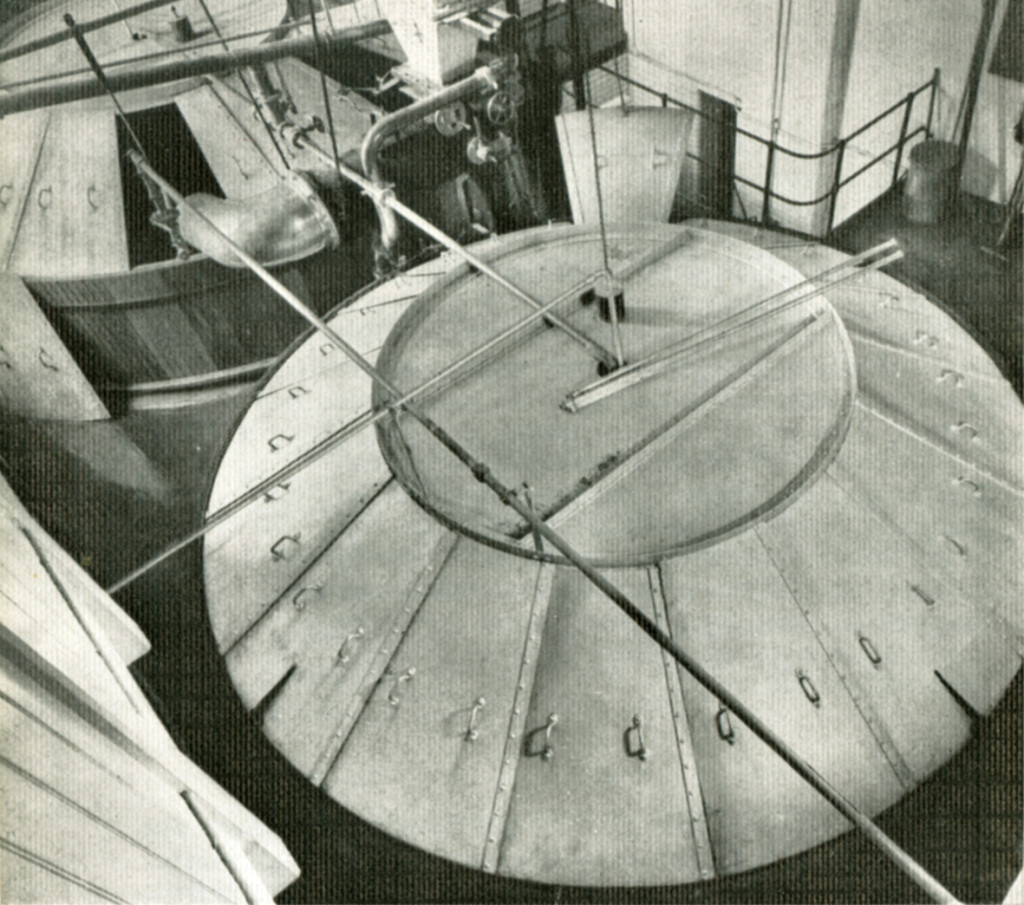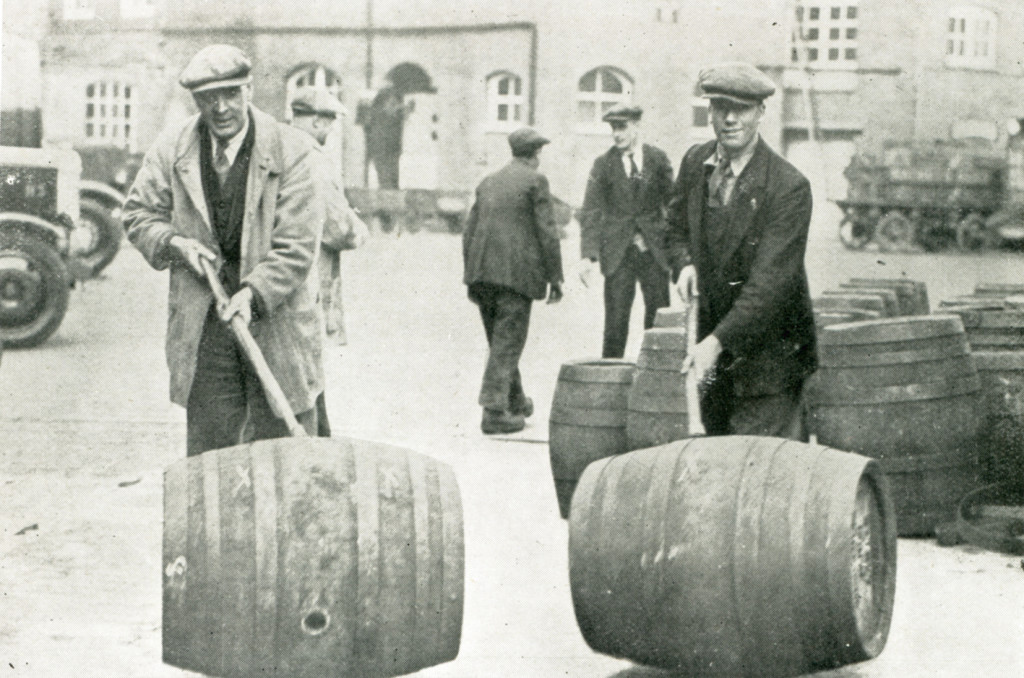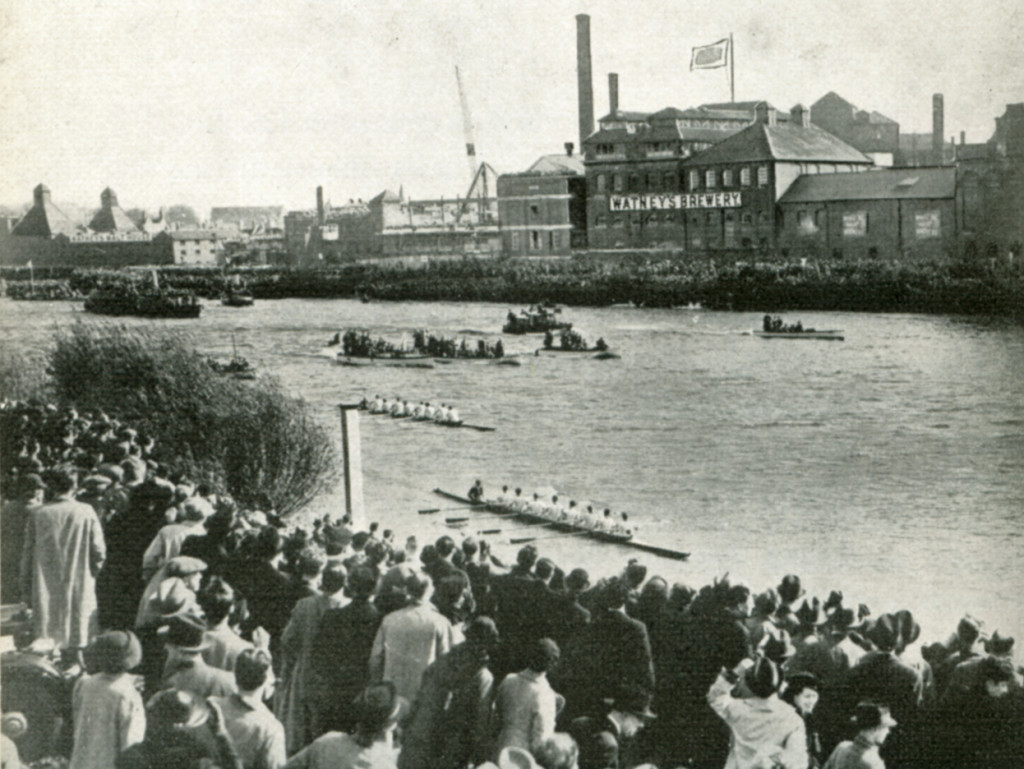It is one of history’s ironies that just as London hits more breweries than at any time in the past 110 years, its brewing capacity is more than halved with the closure of the last of the capital’s remaining megabreweries, at Mortlake.
That the brewery at Mortlake, which has been pumping out hundreds of thousands of barrels a year of Budweiser for the past two decades, should have survived to be at least 250 years old this year is remarkable: it lost its independent in 1889, and the guillotine has been poised above its neck for the past six years.
The Mortlake site, famous as the home of Watney’s Red Barrel, was one of eight huge breweries still operating in London in the mid-1970s, which between them made one in every five pints drunk in Britain. Four closed between 1975 and 1982: Charrington’s in Mile End, Whitbread’s on the northern edge of the City, Mann’s in Whitechapel and Courage by Tower Bridge. Truman’s brewery shut in Brick Lane in 1989, and Ind Coope in Romford in 1992. In 2005, Guinness closed the Park Royal brewery. With the shuttering of Young’s in 2006 (yes, I know there’s still brewing on the site, but it’s not a commercial operation), in 2007 brewery numbers in London hit what was almost an all-time low, of just 10.
It’s instructive to see how brewery numbers have fluctuated over the past 300 years:
1700 London had 190 breweries, producing a total of 1.7 million barrels of ale and beer.
1786 Still around 161 brewers in the London area, though the top 12 London porter brewers made up half the capital’s beer production
1826 London has 93 commercial brewers, and 61 retail or pub brewers
1850 More than 40 London breweries had closed in the previous 20 years. However, the capital can still boast some 160 brewers
1904 London still had 90 breweries, out of a total of 1,503 in England and Wales. It also had just one pub still brewing its own beer, although in the rest of the country there were another 3,108 home-brew pubs.
1913 Brewery numbers are starting to drop, with just 65 left still operating
1919 The First World War, and high beer taxes, have see a big cull, with only 46 breweries now left in London
1923 London is now down to some 42 or so operating breweries
1952 London still had 25 operating breweries, run by some 19 or so companies, out of around 560 breweries in the whole of the UK.
1960 16 breweries left, including some surprising survivors – Harman’s in Uxbridge, for example; the Wenlock Brewery, off the City Road in Shoreditch; Woodheads, running at the South London Brewery in Southwark Bridge Road until 1964; and the Essex Brewery in Walthamstow, which was being run by the Ipswich brewers Tolly Cobbold when it closed in December 1971
1976 After all but two of London’s smaller breweries had shut, and with the closure of two of the largest, Charrington’s and Whitbread, the capital reaches an all-time low of just nine breweries
1981 A burst of pub-brewery openings lift numbers to 20
1998 The growth of the Firkin chain helps push brewery numbers up to a post-Second World War high of 34
2000 Closure of the Firkin breweries sees numbers fall to just 20
2007 While the rest of the country sees brewery numbers rising, London is now down to just ten
2010 Brewery numbers start to climb again, to 14
2012 A surge of openings sees a new post-war high of 36
2013 Brewery numbers almost double in a year, to hit 70
2015 Numbers now believed to be around 80, more than for 110 years
We’re one more down, now though: and whatever you thought of the beer it brewed in recent years, it’s still, I think, a little sad that this is the end of an important chapter in London’s industrial heritage. So here’s my small tribute:
Much of the commentary about the brewery’s closure claims it was founded in 1487, when a Welshman, John Morgan, was “induced” (to use a term first used by an antiquarian writing in 1886) to start a brewery at Mortlake, supposedly to supply the largely Welsh household of the new Tudor king, Henry VII, who was to base himself at the palace at nearby Sheen – shortly to have its name changed to Richmond. It has also been claimed that the brewery sprang from a brewhouse at Mortlake Manor House, which was occupied by the Archbishops of Canterbury from at least the 11th century. But the archbishops continued to own the manor house until 1535, after which it went to a multitude of hands, before being demolished, apparently, soon after 1700. There is absolutely nothing currently known to link either Morgan or the manor house to the two small breweries recorded in 1765 either side of Thames Street in Mortlake, leading to the Town Dock, one owned by James Weatherstone and the other by William Richmond, which are the first recorded commercial breweries in what was then a small village.
By 1780 Richmond’s brewery had been bought by a man called John Prior. Weatherstone meanwhile went into partnership with Carteret John Halford. In 1807 Weatherstone and Halford bought land next to the river with a frontage of 104 feet and extended their brewery premises northward. Four years later, in 1811, they acquired Prior’s brewery, merging them into one, though Thames Street still separated the two halves. Weatherstone passed on his brewery to his nephew Thomas, who carried on the partnership with Halford until he died around 1825. The business was substantial enough by now that it employed a clerk, called John Stephenson and a brewer called George Dyson, who signed the codicil to Weatherstone’s will in 1824. Halford was then in partnership at the brewery with William Topham: at one point they were “brewers to her Majesty”, according to a directory entry. By 1840 Halford was dead, and Topham had entered into a new partnership with George Streater Kempson, who looks to have been a relative by marriage of Halford’s. In 1841 Kempson and Topham’s operation at Mortlake was described as a “considerable establishment”.
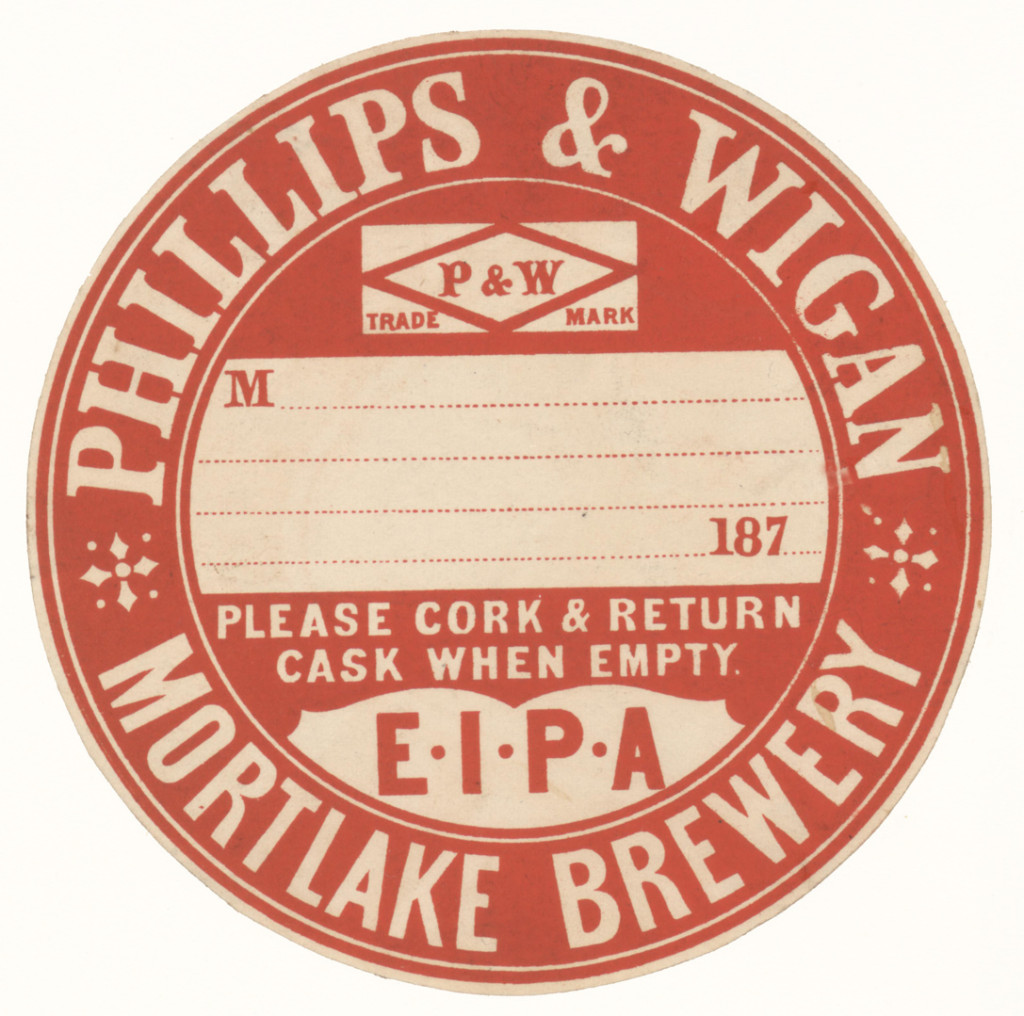 Charles James Phillips, son of a corn and coal merchant, became a partner in the firm in 1846, which was listed in 1849 as CJ Phillips and GS Kempson. Then in 1852, James Wigan, aged 20, the son of a hop merchant, bought a half-share in the business for £15,000, and it became Phillips and Wigan. By that time the brewery was using around 5,000 quarters of malt a year, suggesting an output of between 20,000 and 25,000 barrels of beer. In 1865 Phillips and Wigan bought the freehold of all the properties along the river frontage, for £2,350, and in 1866 they moved to shut the alleys and streets that ran through the brewery premises, including Thames Street and Brewhouse Lane. The people of Mortlake fought to prevent this, but the brewers eventually won, after a court case. The brewery was then substantially rebuilt, and a stone in the main wall still marks this, with the monogram P and W and the date 1869. In 1876, however, Wigan bought Hawkes’ brewery in Bishop’s Stortford, Hertfordshire and although he continued to live in Mortlake, control of the brewery passed in 1877 solely to the Philips family.
Charles James Phillips, son of a corn and coal merchant, became a partner in the firm in 1846, which was listed in 1849 as CJ Phillips and GS Kempson. Then in 1852, James Wigan, aged 20, the son of a hop merchant, bought a half-share in the business for £15,000, and it became Phillips and Wigan. By that time the brewery was using around 5,000 quarters of malt a year, suggesting an output of between 20,000 and 25,000 barrels of beer. In 1865 Phillips and Wigan bought the freehold of all the properties along the river frontage, for £2,350, and in 1866 they moved to shut the alleys and streets that ran through the brewery premises, including Thames Street and Brewhouse Lane. The people of Mortlake fought to prevent this, but the brewers eventually won, after a court case. The brewery was then substantially rebuilt, and a stone in the main wall still marks this, with the monogram P and W and the date 1869. In 1876, however, Wigan bought Hawkes’ brewery in Bishop’s Stortford, Hertfordshire and although he continued to live in Mortlake, control of the brewery passed in 1877 solely to the Philips family.
The brewery is often said to have “held lucrative contracts for supplying beer to the Army in India”, but if it did, it was not alone: in 1873 the India Office revealed that there were “about eighteen” of the “great London brewers” on the list of suppliers of beer to the Indian army, a trade worth 150,000 barrels a year. Two sets of recipients of Mortlake brewery beer every year were the crews who took part in the Oxford and Cambridge Boat Race: Charles Phillips regularly held a lunch for them at his home at the end of the race.
By the end of the 1880s brewers were starting to gobble each other up as the only way of acquiring new pub customers, with, particularly in the South of England, very few free houses left. In 1889 the Phillipses accepted a takeover offer from Watney’s of the Stag brewery, Pimlico, once one of London’s Big 12 porter brewers, and two of Charles Phillips’s sons, Charles junior and Herbert, joined the Watney’s board. It was not just the Mortlake brewery’s pubs that Watney’s was after: the Pimlico concern needed somewhere that could make the increasingly popular pale ales and bitter beers, and the Mortlake brewery seems to have had a good reputation for them. For many years after the acquisition, all the bitter for Watney’s London trade was brewed at Mortlake and taken down river by two barges, called Mollie and Ann.
In 1898 Watney’s merged with two other long-established London porter brewers, Reid’s of Clerkenwell and Combe’s of Covent Garden, to become the largest brewing concern in London. Reid’s brewery was closed, but Combe’s ran for another six years, until the Mortlake brewery had been rebuilt enough to supply the enlarged operation, including an I eight-storey maltings built by the riverside in 1903 on the eastern corner of Ship Lane.
With the restrictions on beer production brought about by the First World War, brewing at Mortlake actually ceased for a while during the conflict, and the site was used for the production of (unrationed) honey sugar, sold under the Union Jack brand in cut-down quart beer bottles.
In 1930 Watney’s bought a bulk beer pasteuriser from a firm in Germany, installing it at Mortlake, and began experimenting with “container” bitter – pressurised keg beer. The first customer was the nearby East Sheen Lawn Tennis Club, where a Mortlake brewer, Bert Hussey, was a member. But “keg” beer was also being installed in pubs as early as 1933: when the Chequers Inn in Isleworth, a few miles from Mortlake, was rebuilt, the Watney’s house magazine, The Red Barrel, said:
“A feature of this house is an innovation in the system of supplying the beer to the bar from the cellar. It is delivered under pressure direct from the cask and does not go through any pump of beer engine. It is one of the most hygienic methods of service known and this is one of the first houses in the country to be so equipped. It ensures that the beer is served to the customer in the same condition as that in which it leaves the Brewery.”
Two years later, in 1935, the company launched the Mortlake-brewed Watney’s Special bitter, stronger and more expensive than the “ordinary” bitter, at eight pence a pint in public bars, nine pence in the saloon
In 1959 the original Watney’s site in Pimlico closed. Mortlake was still not big enough to brew all the company’s beers, and a year earlier Watney’s had taken over Mann’s brewery in the East End to ensure it had enough capacity. By 1971 Mann’s was looking old and cramped, however, and Watney’s set in train plans to shut Mann’s and expand the Mortlake brewery again. In the meantime the company decided that since Mortlake would not be ready until 1975, at a cost of £7 million, it needed to buy more capacity. It was about to bid for another East End brewery, the recently refurbished Truman’s in Brick Lane, when Joseph Maxwell of Grand Metropolitan made an unexpected move on the Brick Lane brewer. The two-month fight that followed seems to have exhausted Watney’s, the loser, so much that it succumbed itself to a bid from Grand Met the following year.
By the 1980s, under Grand Met, Mortlake was essentially a massive lager brewery, with Fosters and Holsten Export the big brands, though according to one ex-Mortlake brewer, Watney’s Special and Watney’s Pale Ale were still “reasonable” volumes, with Watney’s Pale Ale a “significant” bottled beer brand. However, automation meant that the number of employees had plunged, from 1,400 in the 1960s to just 400.
The brewery changed owners several times in the 1990s as the reverberations of the 1989 Beer Orders saw Britain’s giant brewery companies merge, evaporate or quit brewing, and in 1995 the Mortlake site, which had been given the former name of Watney’s premises in Pimlico, the Stag brewery, was leased to Anheuser-Busch to make Budweiser. It still had a capacity of a million barrels a year in 1995, though it has probably not been making more than about 650,000 barrels a year in very recent times: even now, probably more than all the rest of London’s breweries put together.
An announcement that the site was to close was originally made in 2009, by which time only around 180 people were employed there, though a year later it appeared that a surprise increase in sales of Budweiser had stayed the axeman’s hand. Now, however, AB, or rather AB InBev, as it has become, which eventually bought the leasehold of the 21-acre site, has shut it down, and sold it to a Singapore-listed company, City Developments Ltd, for £158m. There are, apparently, no firm development plas yet, but one extimate reckons 850 homes could be fitted onto the site – you can see how big it is here.
